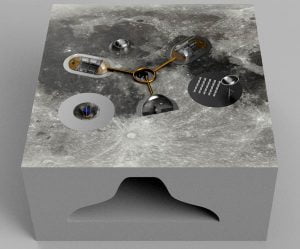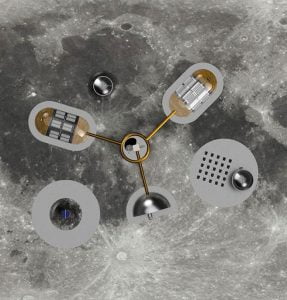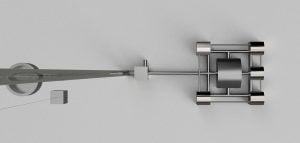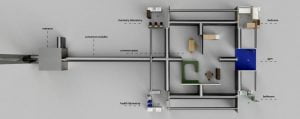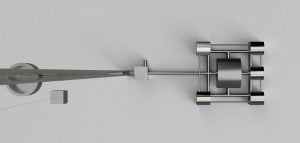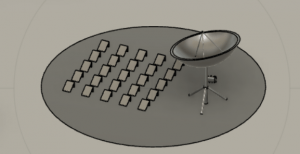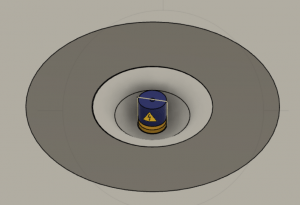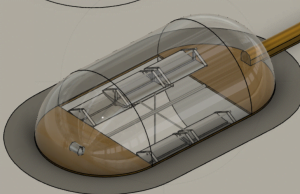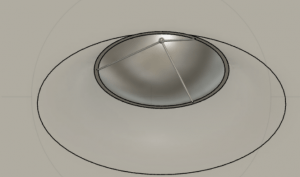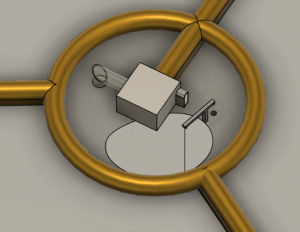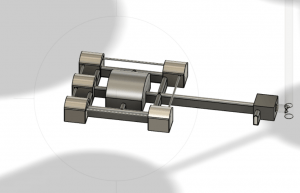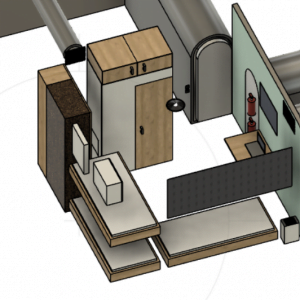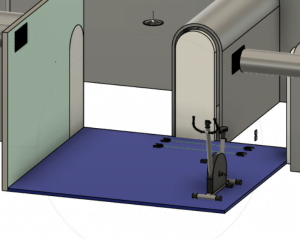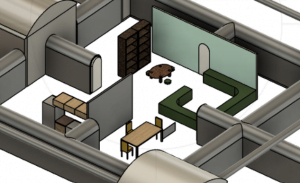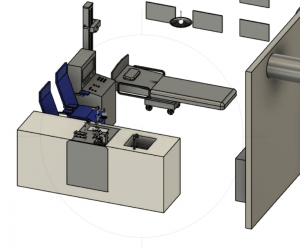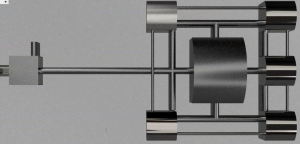Moon Camp Pioneers Gallery 2020-2021
In Moon Camp Pioneers each team’s mission is to 3D design a complete Moon Camp using Fusion 360. They also have to explain how they will use local resources, protect astronauts from the dangerous of space and describe the living and working facilities.
Team: Luna-R-Park
3th High School of Vrilissia and Moraitis School (we do not represent the school) Athens Greece 15, 16, 14 or younger
External viewer for 3d project
|
Project description
Our Luna-R-Park project will be a first outpost for lunar explorations, in order to come closer to making moon a habitable place. Building our base at the Moon’s South Pole inside and around a lava tube with the help of robotic appliances, 3d printers and much more, it will provide a safe, sustainable and autonomous place for astronauts. One of the biggest challenges is to discover the most efficient ways to use the Moons’ natural resources (regolith, water ice etc.) to the greatest extent, so as not to have to transfer heavy loads there. With the use of solar panels, rovers, crops and various modern technological achievements, as well as with some creative patents of our own we will try to ensure the supply of water, food, energy, breathable air (oxygen and nitrogen). Our moon base will be able to accommodate 3 astronauts for a long period of time without being supplied from Earth. We chose to bring 3 astronauts so that the base will be more functional and safer in case of illness of a member, minor injury, accident and long-distance exploration with rover. Moreover, sending 3 astronauts will entail a relatively low consumption of energy produced by the base and will also ensure more specialties. All in all, our plan is to create a base that will help humanity become an interplanetary species. “That’s one small step for man. One giant leap for mankind.” (Neil Armstrong). Let’s move on and continue humanity’s effort to conquer the moon! |
|||
|
Where do you want to build your Moon Camp?
Our lunar base will be built at the Moon’s South Pole, inside and around a lava tube. We chose this location due to the fact that there are large amounts of ice inside the craters, endless solar radiation, and a temperature that stabilizes at around -20οC (-4οF or 253Κ) inside the lava tube. More specifically, the exact location of our facilities will be chosen based on: i) the presence of ice in the nearby craters For the choice of the lava tube, we will consider the diameter of the entrance (about 20 meters), the depth (about 20 meters), the stability of the terrain (no collapses) and the appropriate thickness of the walls for protection (>5 meters). How do you plan to build your Moon Camp? Describe the techniques and materials you would use.
Our lunar base will be built using different methods. Firstly, a satellite will find a suitable lava tube in the South Pole. Then, DAEDALUS sphere will collect information about the composition, stabilization, temperature and sunlight of the area. After that, spacecrafts will be sent, equipped with 3D printer-arms using regolith reinforced with glass fiber and metals to make the basic part of the facilities, as well as big tools of the machines. Next, 3 spacecrafts will land, 2 of which will bring materials and appliances that are necessary for the base and that are too difficult to be created with 3D printers. The third spacecraft will bring a group of 3 astronauts who will do the last tasks. During these tasks, the astronauts will be staying in a self-inflated module made from kevlar-like materials or carbon fibers. After all these procedures, the base will be able to accommodate 3 astronauts. Our base will be separated in 2 main parts. The first part will be located on the inside of the lava tube and will include: a bedroom, a community hall, 2 laboratories, a personal hygiene room, a gym, a small entrance room and 6 connector modules. The second part will be outside the lava tube and include: solar panels, a hollow mirror made on a crater, that will select and use solar radiation, flywheel energy storage, special greenhouses with crops and animals, a tank that will liquefy the ice, a building for water electrolysis, hydrogen cells, battery packs and wiring. The environment on the Moon is very dangerous for the astronauts. Explain how your Moon Camp will protect them.
Our base focuses on the astronauts’ safety and the lava tube where our base is built already provides that. On the inside, the facilities will be in an area where the collision of small meteors is geometrically impossible, and there is not as much radiation. The use of bags full of regolith to cover the outside of some buildings and 3D printers will provide thermal insulation and protection against radiation. The radiation shielding transparent (photo-permeable) surfaces will be made of membranes that will reflect only dangerous radiation. All the facilities will be equipped with airlocks, detection sensors (CO2, gas, fire), fire extinguishing systems and air cleaning filters. The astronauts’ spacesuits, and the big rover will have thermal, radiation and pressure protection. Moreover, astronauts will keep fit by exercising every morning. Finally, there will be processes in which the physical and psychological health of the astronauts will be examined. Explain how your Moon Camp will provide the astronauts with:
|
|||
|
Water
|
Food
|
Electricity
|
Air
|
|
Although the Moon’s craters have amounts of water ice, its utilization must be really careful. The bigger rover will be equipped with mining tools and will collect ice from craters nearby. After that, it will return to the base and transfer the ice inside a tank, where the liquefaction will take place. Then, it will be used for the needs of astronauts and chickens, for electrolysis, crop watering and machine cooling. Since the base will have limited water production, there will be recycling systems (like the ones on ISS) for urine, water spent on personal hygiene and plant watering. |
Astronauts will consume food from Earth, until plants are sufficiently developed to be eaten. After research, we ended up growing lettuce, tomatoes, lentils, chickpeas, mushrooms, peppers, beans and strawberries. We will mix fertilizer with regolith and later we will use chicken stumps and human feces as fertilizer. Withered leaves will be used for the cultivation of mushrooms. We will also use hydroponics and aeroponics methods, transport a few hens, but also bring several chicken eggs that will be incubated at the base with the aim of producing eggs for food and also try to bring bees to help with pollination. |
Our base will be powerful?. Solar energy will be utilized through thin solar panels and through a special hollow mirror. This energy will be stored in batteries, capacitors, flywheel energy storage and be used to power electrical appliances and for electrolysis. Moreover, quantities of water ice, after being liquefied, will be utilized through electrolysis and provide hydrogen, which will be stored in cells and be used as fuel for rovers. Small amounts of energy will also be provided by the sports equipment (bicycle with an electromagnet). Electricity will be supplied to the entire base with insulated cables. |
The source of oxygen will be water (which will be obtained from the extraction of ice and through electrolysis will provide the necessary oxygen) and plants (e. g. aloe vera, gladiolus). Moreover, the base will have nitrogen from tanks, which will be transported at the beginning of the mission to the Moon and from the processing of the astronauts’ urine. In near future, we may use a method, which has not yet been perfected, to draw oxygen from the regolith. All buildings will have airlocks and especially those inside the lava tube will have air recycling filters and air humidity controllers. |
|
Explain what would be the main purpose of your Moon Camp (for example: commercial, scientific, and/or tourist purposes).
Our lunar base will be built for research purposes: study the… i)effect of low gravity on humans, animals and plants. ii)efficiency of utilization of specific energy sources and its storage methods. iii)physical and psychological condition of astronauts and animals under these conditions. iv)whether it is possible to create a safe, autonomous base where not only humans, but also animals can live. In the future, the purposes of the base will be: i)the study of the birth and evolution of our solar system (since the moon is one of its oldest bodies) ii)the creation of a space elevator (for less weight when launching space vehicles) iii)a base supply to facilitate space travel (fuel economy) iv)the study and extraction of valuable meteorite material that have landed there v)the exploitation of Helium-3 vi)safe and cheaper space tourism vii)the operation of the base as a symbol of cooperation and evolution of all humanity. |
|||
|
Describe a day on the Moon for your Moon Camp astronaut crew.
Good morning!! The 3 astronauts* wake up after 7-8 hours of sleep (the program will be 24 hours). Firstly, they take care of their personal hygiene. Then, until their senses and muscular strength are fully activated, they observe their pets tardigrades with a magnifier, enjoy the natural landscape, which is shown on the big screen on the wall, and have fun with the joke they read. Then comes the time for exercise. They ride a special bike while wearing VR glasses to see that they are in a quiet picturesque alley or even in a tough mountain-bike race. They also do resistance band exercises, in which they train all their muscle groups, while listening to music. Afterwards, they eat breakfast, which they will have prepared from the day before, control the base systems and communicate with the Earth (both with the earth base and 1 in 2 days with their family) from the computer. If they have had an accident in the previous days or they are not feeling well, they are subject to a detailed physical and mental health test. Then, they check for any work inside the lava tube and after performing it they go up to the surface with α a special elevator with counterweight. They head to one of the special greenhouses (if they want with the small rover or on foot) and do various tasks. They water the plants and feed the chickens and play a little while with them. Afterwards, they go back to the lab, do experiments and when they finish, they eat lunch and take a small break. After the break, they go up to the surface, where they check energy systems and devices, while moving with the small rover. Once they have finished, they have 2 options: i) direct return to the facilities inside the lava tube, where they will communicate with relatives from Earth, take care of their tardigrades, plan the next day’s program, cook for dinner, prepare the next meal and if they want, they will play some board games or just relax, until bedtime ii) exploration with the big rover, which has a pressure cabin, thermal and radiation protection and then go to sleep. *the first will be a doctor and biologist, the second a physicist and chemist and the third an engineer and geologist |
|||


